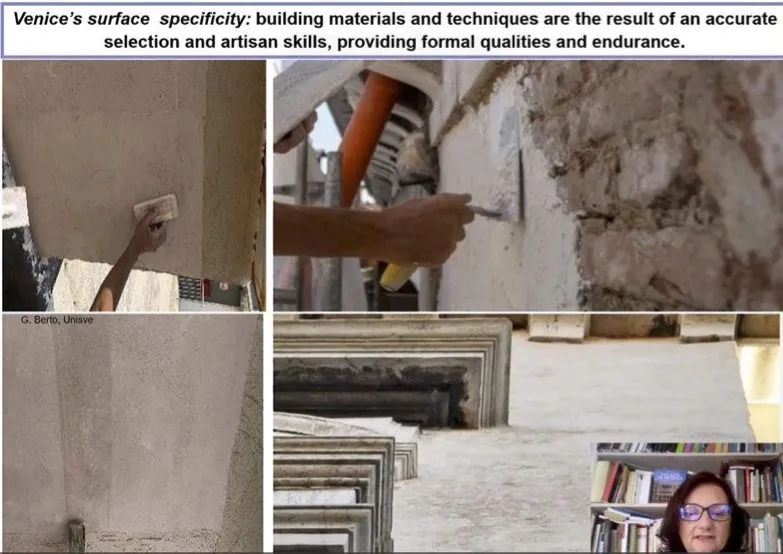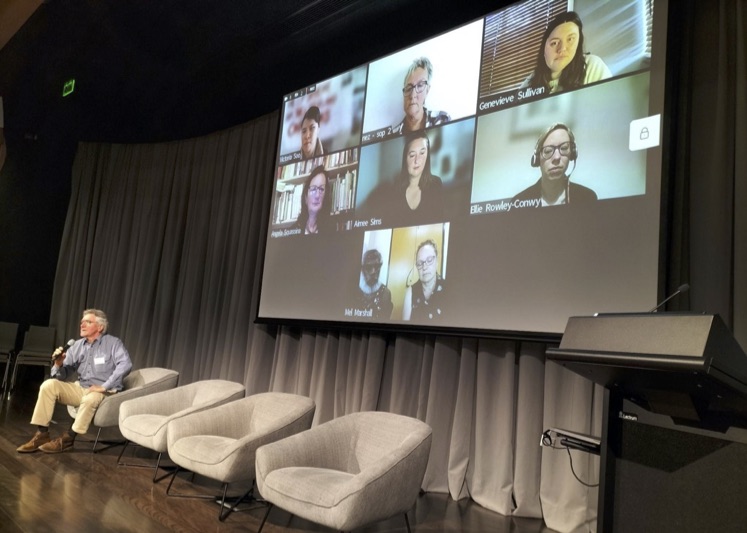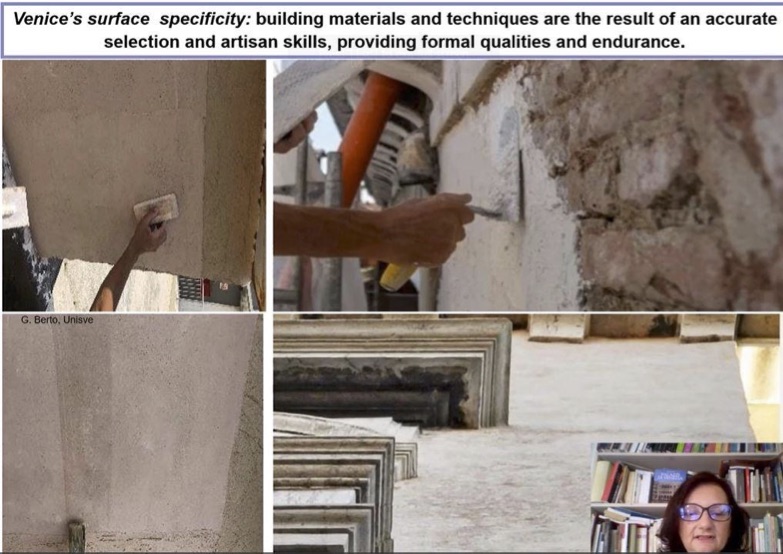Session 6: New Approaches for Buildings and Sites
Submitted by sharragrow on 08 Sep 2022

Genevieve Sullivan

The last of the in-person sessions on the third day of Congress covered new approaches for buildings and sites, with varied and interesting projects from Australia, Oman, Italy and England. Skillfully hosted by Tharron Bloomfield, Māori Heritage Advisor at Heritage New Zealand Pouhere Taonga, the session consisted of five diverse presentations and a Q&A which covered the preservation of knowledge and multidisciplinary skills required of conservators.
Preserving the Ancient Human Trackways Site in Willandra Lakes World Heritage Area
The session was opened by Colin Macgregor whose work on Preserving the Ancient Human Trackways Site in Willandra Lakes World Heritage Area outlined the process of discovering and dating 20,000 year old human foot prints in the silt of an ancient lakebed in South-eastern Australia. The project is run in collaboration with the local custodians of the land consisting of elders from the Barkindji, Mutthi Mutthi and Nyiampaa communities, as well as the National Parks and Wildlife Service. Discussion after the presentation was largely focused on the decision to rebury the site despite the original hope to make it a visitor attraction. Given the threats of wind-blown sand, foot traffic, grazing animals and rain water, reburial was necessary after it was digitally recorded using a 3D laser scanner.
Looking After the Rock Art of Kakadu National Park, Australia
The importance of collaborating with Indigenous leaders was also emphasised by Melissa Marshall, Jeffrey Lee and Gabreille O’Loughlin who shared their work published with Kadeem May Looking After the Rock Art of Kakadu National Park, Australia. Their presentation documented the development of the annual program which created a rock art monitoring and maintenance manual to assist rangers and Bininj/Mungguy site custodians and other local Aboriginal people to identify specific threats that were damaging the site. Risks include animals, water, vegetation and the deterioration of previous interventions, specifically failing artificial silicone drip lines. The Q&A prompted conversations regarding the multidisciplinary skills required of a conservator, including both technical and social skills for a project of this kind and the importance of passing on knowledge to the younger generation. This was addressed within the project with the creation of a junior ranger program.
Preserving Venice

From Australia to Italy, Angela Squassina’s Construction Wisdom: Preserving Venice with Both Tradition and Innovation reminded the audience of the importance of preserving not only physical materials but intangible knowledge also. The project encourages the use of historical materials to maintain the city. It also works to share the expertise of artisans through workshops teaching traditional manufacturing and construction techniques to University students with the Venice Craftsman Association. Questions from the audience were largely around methods for preserving intact heritage. They discussed premium costs for staying in accommodation in a heritage listed building and the difficulties protecting heritage in a city so popular with tourists.
Conserving Husn Salūt fort, Oman
The value of intangible culture was similarly present within Stefano Bizzarri’s A Multidisciplinary Approach to the Conservation of Salūt, Sultanate of Oman. While unfortunately, Bizzarri wasn’t able to join the Q&A, the recorded presentation did a fantastic job of introducing the audience to the process of conserving the earthen architecture of the Husn Salūt fort, structures at the Qaryat Salūt settlement and Bronze Age tombs of the Jabal Salūt mountain. This required historical and ethnographic research into the traditional techniques of mud, brick and plaster construction and a preventive survey with 3D modelling to assess previous interventions. It also critically involved community engagement and university collaboration to ensure the preservation of traditional techniques and non-material culture.
Restoring the Palace of Westminster, UK
The presentations were concluded by Jennifer Ellison, Eleanor Rowley Conwy and Aimee Sims who shared their work Saving the Seat of Democracy: the Restoration and Renewal of the Palace of Westminster, which examined the role of conservation in the planning and management of a project to safeguard parliamentary heritage and ensure it is functioning for the 21st Century. An interesting addition to the project was the use of building information modelling which used laser scanned data to digitally map the site and assist with visual planning and storage of conservation information such as conditions assessments of objects remaining in-situ during the construction work. From the Q&A we learnt that while conservation is becoming a more acknowledged and respected field, the authors still felt they had to fight to have cultural heritage prioritised during the Restoration and Renewal Program.
Host of the session, Tharron Bloomfield concluded the event by sharing the thought that while people impact place, more importantly, place impacts people.
AUTHOR AND BYLINE:
Genevieve Sullivan is a student object conservator at the University of Melbourne.